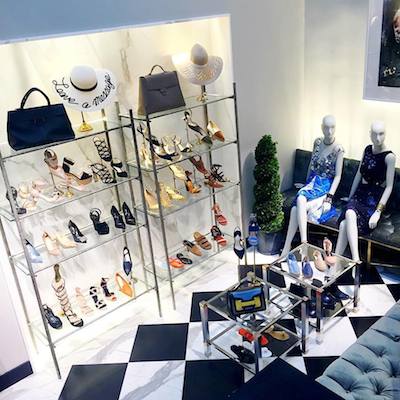NEW YORK – Rather than looking at ecommerce and digital as competitors to the traditional bricks-and-mortar store, retailers should think of them as complementary channels, according to panelists speaking at Future-Culture-Design.
During the “Who Owns the Future of Retail?” session June 9, insiders weighed in on everything from the state of the mall to the engagement opportunities that exist for brands within the physical store. Consumers today have practically unlimited options, giving them the control in the retail relationship, and making a point-of-view and differentiation all the more important.
“The edit cannot be ever underestimated,” said Marigay McKee, founder of MM Luxe Consulting. “I think the one thing people are really looking for is an edit, a point of view and a reason to buy.
“Yes, it’s about engaging our customers, our hospitality and allowing them to come in and experience our brand and actually get something out of the equation, not just being a number…But it’s also talking about the product.”
Physical meets digital
Six years ago, Claire Distenfeld decided to quit her job. Looking to bring an element of experience back into shopping in New York, she took an old-school approach to high-end retail, opening Fivestory, a highly curated boutique housed in a townhouse on the Upper East Side of New York.
Contrary to the digital-first strategy of many retail startups today, the millennial entrepreneur chose to have a physical space before eventually expanding Fivestory into online.
Agreeing with the idea that experience is king for retail today, Ms. McKee, the former president of Saks Fifth Avenue and chief merchant at Harrods, said that ensuring a brand’s place in the future of retail comes down to experience, environment and emotion. Integrating elements of hospitality into the retail space, such as an eatery or a coffee bar, can give consumers more reason to enter a store and spend time there.
Following this idea of having space for more than shopping, Ms. McKee said that her firm works with a real estate company, since the trend today is moving away from malls and toward mixed-use developments.
Ecommerce sales are growing at a clip, while bricks-and-mortar’s results are flattening. Rather than attributing this decline to external factors, Tony King, CEO of digital agency King & Partners, said that U.S. retailers only have themselves to blame. He argued that while other countries look at digital as a counterpart of the physical store, U.S. brands have taken a different angle that has hurt their businesses.
For instance, he has witnessed consumers showrooming in department stores, taking advantage of the physical merchandise and dressing rooms, but then buying elsewhere from their phones.
Using digital to their advantage, luxury brands should look for ways to bring the in-store experience online. This may mean investing in high-quality photography or innovating with services to make the customer’s life easier.
The Level Group’s co-founder Andrea Ciccoli mentioned digital’s capabilities for engagement. As luxury brands frequently staging pop-up stores to gain a physical presence without a large real estate investment, digital enables them to extend their relationship with the visiting clientele beyond the lifespan of the temporary outlet.

Anya Hindmarch Mini-Mart pop-up in London
Digital can also influence product selection and merchandising decisions.
Ms. McKee said that while retailers used to witness the power of a recommendation from Oprah Winfrey, with products mentioned on the media mogul’s list selling out, Instagram holds a similar sway today. With Instagram’s extensive audience and its interest in going beyond a content hub to a purchasing platform, it may change the game for retail.
Changing atmosphere
The luxury retail environment is undergoing critical changes, making it is essential for retailers to focus their attention on enhancing the in-store experience, according to a recent report by Unity Marketing.
Affluent consumers increasingly prefer to shop online, and for traditional retailers to compete they will need to offer more specialized and personalized retail experiences. Furthermore, as affluents have been shown to have less interest in the accumulation of possessions, it is important for retailers to make stores more experiential and craft a rewarding experience for consumers (see story).
Fifteen years from now, the luxury industry’s current retail models will no longer work as consumer expectations will have radically evolved.
During “The Future of Luxury: Global Research Insights, Emerging Trends and New Business Models for 2030” presentation held last June and conducted by graduate students of the Fashion Institute of Technology class of 2015, the peer groups suggested that lasting memories, “centers of creation” flagship stores and like-minded cities will drive luxury sales in the future. The three presentations built on the larger themes of new luxury consumer values, platforms and epicenters to paint a picture of what the world may look like if consumer behavior continues on its current track (see story).
The physical store is not going away, but retail environments are ready for change.
“The trend of ecommerce or just Web companies that are now realizing they need a brick-and-mortar, they need a physical space,” Fivestory’s Ms. Distenfeld said.
“While yes, it’s very easy to shop online, by human nature, you want to touch things, it’s just inevitable,” she said. “And people like to be around people. Malls are never not going to exist.”
from
http://redirect.viglink.com?u=http%3A%2F%2Fredirect.viglink.com%2F%3Fu%3Dhttps%253A%252F%252Fwww.luxurydaily.com%252Fretails-future-hinges-on-experience-digital-innovation%252F%26key%3Dddaed8f51db7bb1330a6f6de768a69b8&key=ddaed8f51db7bb1330a6f6de768a69b8


No comments:
Post a Comment